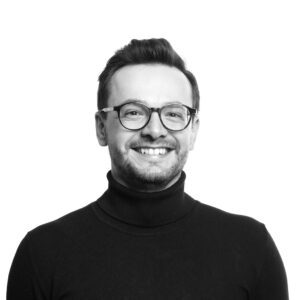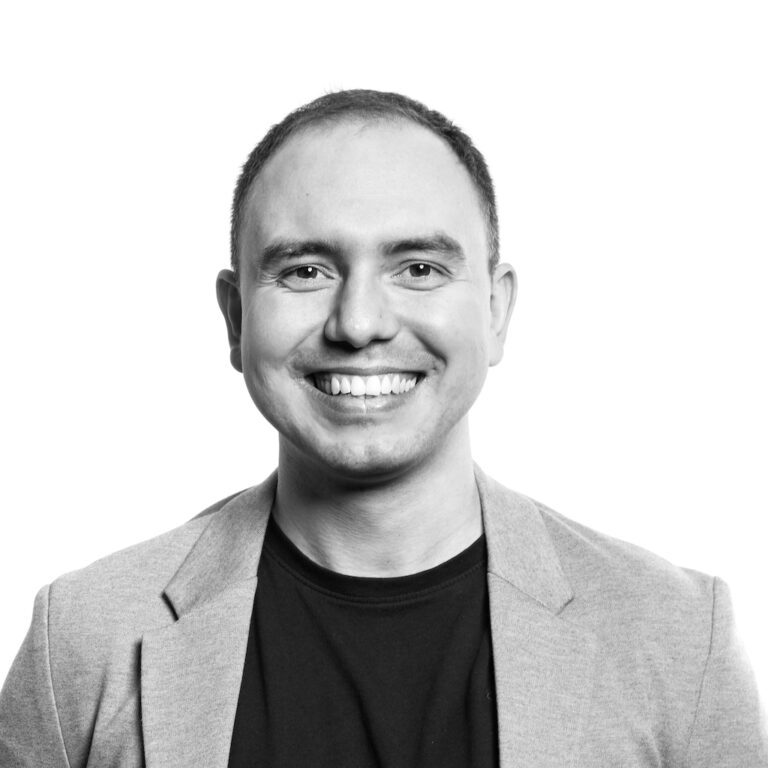Anatomy of a Team: R&D
Come below deck on the good (pirate) ship Black Label R&D and meet the Tech Lead of this elite crew – Maciej Kucaba. We’re charting a course for AI innovation!
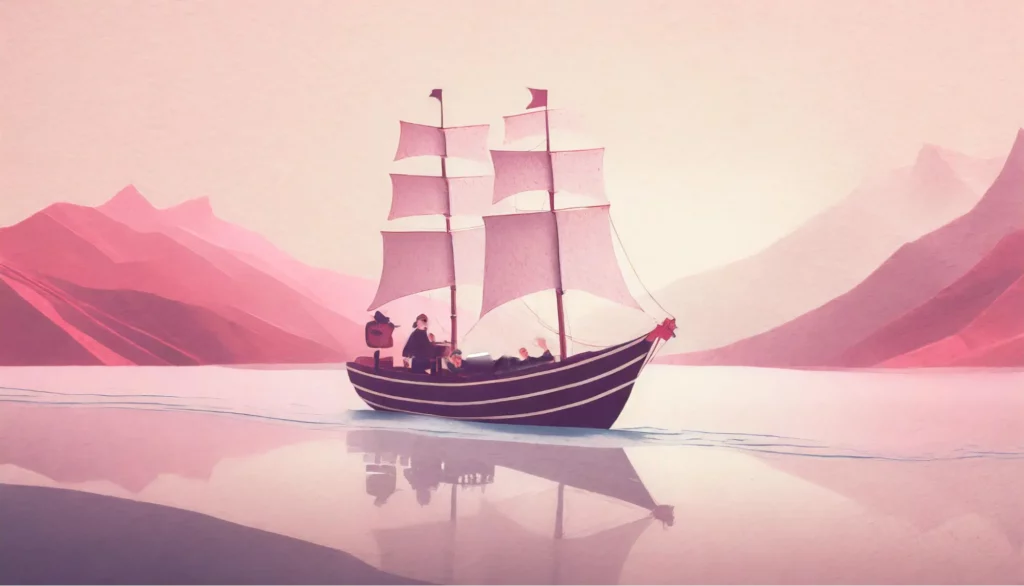
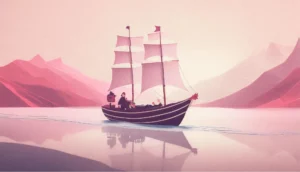
I’m thrilled to be able to introduce a new series of articles in the Operations Table Category where we dive into the organizational structure of Black Label and dissect the anatomy of individual teams. In this series, Grzegorz Iwacz and I will be taking you behind-the-scenes (and below deck) with our team members, shedding light on our teams, processes, and plans. This new form is a bit of a leap into the unknown for the team, requiring us to think outside of the box, or even outside of the boat.
Today I’m interviewing one of the members of BL who is best qualified to discuss this concept, as this is exactly what he has been doing for the last three months as the Tech Lead of our R&D team. Maciek is a rock climber, a singer, and a full-stack developer with the mindset of “let’s make a change”, something that really comes across in the interview.
It is the perfect moment for our discussion as well, since the R&D team has just finished up their first Prototype, and are poised to demo it to the amazing crowd at the Norway Fintech Festival 2024 in Bergen, Norway. So, without further ado, let’s unravel the mystery of the creation of BL’s R&D team, the concepts of Advisory vs Core team, team formation, and give you a peek both inside and outside of the processes that are going on…
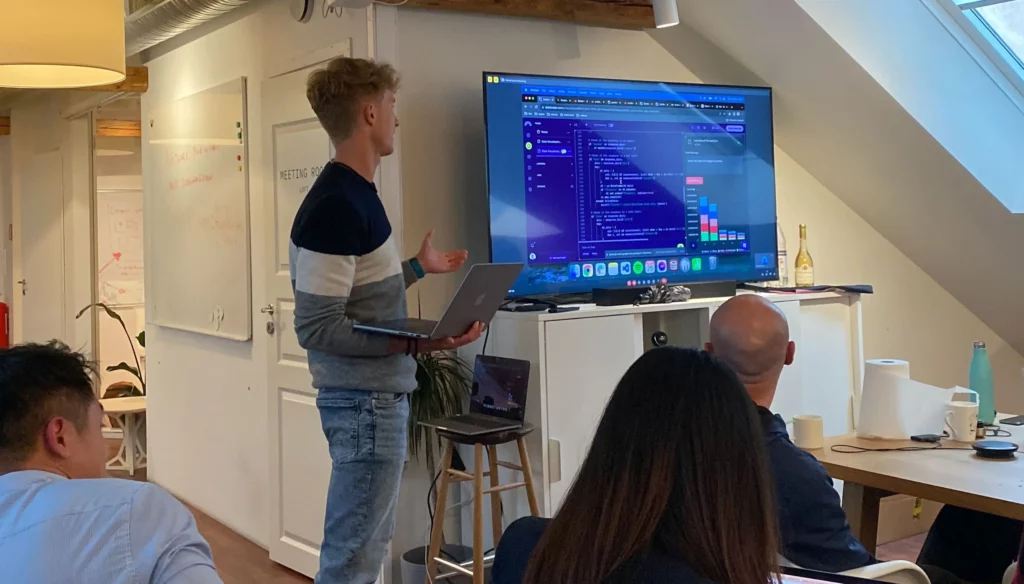
Grzegorz Blachliński & Maciej Kucaba sat down at the Black Label office in Krakow to discuss the R&D Team.
Grzegorz Blachliński (GB): So, could you just give us a brief overview of your role in the Black Label R&D team?
Maciej Kucaba (MK): Of course. So my role in the R&D team is Tech Lead and that’s actually also how I see my role in Black Label as well. I’m the one responsible for adjusting technologies to the products. We want to build and improve the quality of the code and integration tools and so on, but it’s always important to remember that it needs to work well together – that’s my task in simple terms.
GB: I would add that you’re not only focusing on the quality of the solutions, but you also need to be pretty aware of what’s going on in the market. So it’s not only about what fits well, but also checking what’s on the horizon and would be a good fit for the rest of the idea. So it’s pretty tough work to be honest.
MK: Sure, it can be demanding but also it’s very rewarding and I think you don’t just need to be up to date with technology. You might only have some prior experience but it’s really important to have a good gut feeling and intuition about what might potentially be a good technology to invest in. After all, we are not talking about a short-term product but we want to build something stable. So tech know-how is really important, especially in the frontend world, where things can be marketed as super fast, up-to-date and everything is optimized and just trust us, blah, blah, blah. But then you need to look under the hood a bit and see how they actually built it, what their level of experience is and you need to listen a bit to your own previous experiences. It’s using this gut feeling that may actually help you the most in the end.
GB: Yeah, that’s all true. I have a follow-up question actually, because you just explained the role of the tech lead in R&D but what about the role of the R&D team within Black Label?
MK: Of course, R&D is a bit self-explanatory because it’s research and development and that’s also actually the core feature of our team in Black Label: we’re the ones responsible for bringing new opportunities for products into the company. But before we bring them, we obviously need a lot of research and we need a lot of development before we can bring something to the table. So, we might present some kind of a pretotype or prototype but more generally we are also trying to create a process that can be later reused by the whole company. We’ve mapped the path of the creation of our first product, noting the things that work well, what could be improved, and so in the end we’ve built a flow that can be used inside the company later by future R&D teams. We aren’t stopping here and I think that’s the idea of R&D: it not only needs to deliver new products that are going to attract funding and investment, but also deliver a process that we can repeat later and constantly refine.
GB: Thank you. Now, when people think of Black Label, apart from us, they usually think of the pretty famous whiskey or a pirate ship and we often use the latter as a metaphor in and for the company. With Black Label as a pirate ship, the R&D team are the guys in small boats, scouting ahead in uncharted waters to seek out future riches and new routes for the rest of the crew. It’s kind of romantic, and as everyone knows I love a good metaphor, but I really like to think of R&D as a small ship in uncharted waters.
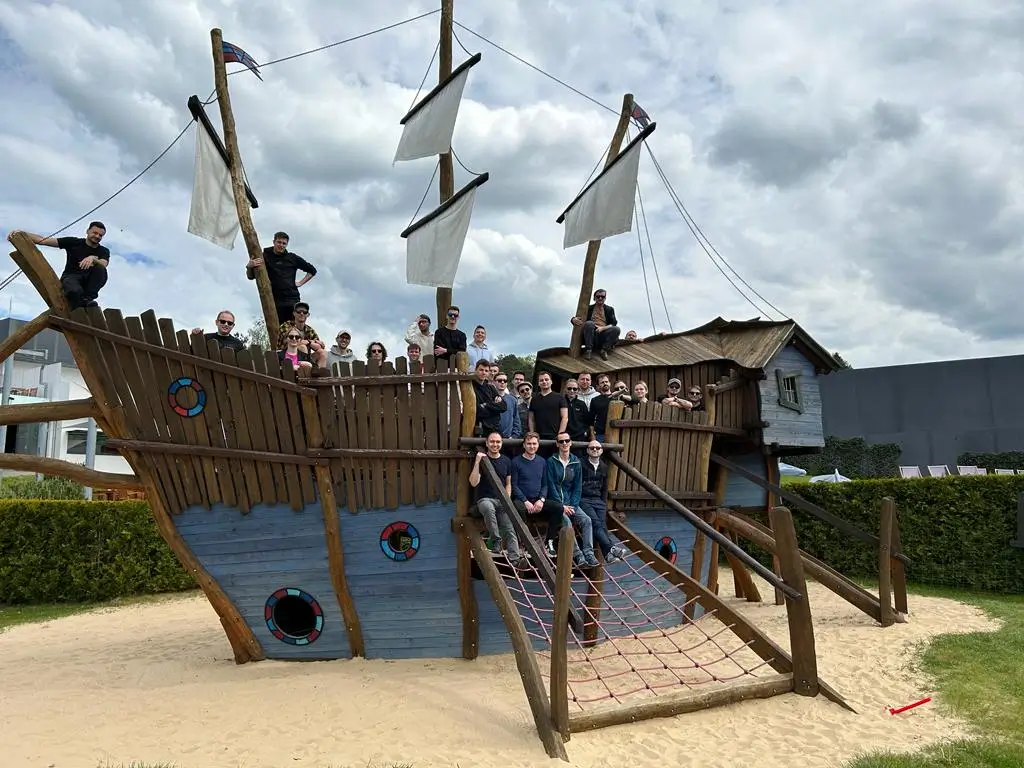
MK: Yeah, but I think it’s a really good analogy. It’s pretty obvious that the main ship, with all of the people on it, all of the equipment on it, it’s not that agile. Let’s say that if it wants to turn quickly in one direction it’s going to struggle – but we can send a smaller boat out to see if we should steer the whole ship in that direction after all. That is actually what we did over the last few months.
GB: Yeah, so maybe let’s turn to that. I’m curious as to how you’re steering the R&D boat…
MK: So at the beginning it was a huge challenge, with a team of three: two back end developers and myself as a full stack developer or tech lead. We were all people with a very technical background, so struggled initially with the research part. Beginnings are never easy, but then it started to get some form and we started to build a process of how we could actually validate things. You really need to be able to quickly validate an idea and I guess the first step is asking whether people are already talking about it. Do they need it? Obviously, the process is far more sophisticated, but that was the first step and when we started to talk about tech solutions, it was way easier. After this phase, it was relatively easy to figure out how to code it and how to connect the pieces. But that is really the short version of a much longer process!
GB: Were there any tensions when you built the team or over the first couple of weeks?
MK: It was pretty seamless. We all know each other really well and have actually shared the same room since I started in Black Label. We are all pretty unique with our various projects and working hours but we started with huge amounts of respect for one another and communication was spot on from the very beginning. You knew who was who and could trust them with a given task, like delivering a nice, stable backend as soon as we needed one. This meant that there wasn’t really any need to manage the team itself – we have a project manager but he’s responsible for managing the whole process. So I must say that, at least from my end, it was pretty effortless in this area.
We all know each other really well and have actually shared the same room since I started in Black Label. We are all pretty unique with our various projects and working hours but we started with huge amounts of respect for one another and communication was spot on from the very beginning.
Maciej Kucaba
GB: Yeah, sounds amazing, like a dream team! We also have the R&D Advisory Group, which I like to think of as a lighthouse for you when you are out in uncharted waters. We can warn you of hidden rocks and dangers but also guide you back home. We had the view from the shore but obviously your view was totally different – how do you feel about that?
MK: Again, I think you’ve found a really good analogy and it is exactly how it was because we had to steer our own course. It was important for us to set that course, that there was help somewhere in the distance, but we knew that it was there and that we could always ask for advice or help with crucial decisions. It was a good degree of separation and it gave good results.
GB: Yep, happy to hear that. To return to the team itself, did you have some fixed roles in the team or did you opt for something different? Obviously you started out as a team of three, but now there are a lot more of you!
MK: Yes, I think this happened from when we switched from the research phase and developed a prototype. While working on the prototype, you could see this visible separation into two teams: one made up of backend and the other of front end developers. Each of us only worked in one of these areas, even me. I had expected to do some stuff on the backend side but in the end our backend guys were so good that there was no need at all. The front-end work was pretty demanding, especially at the beginning, so I put all my focus there. One thing, though, is that because not everybody is working full-time on this project, we still feel like we have the same atmosphere as we did with three, with people switching in and out depending on their availability.
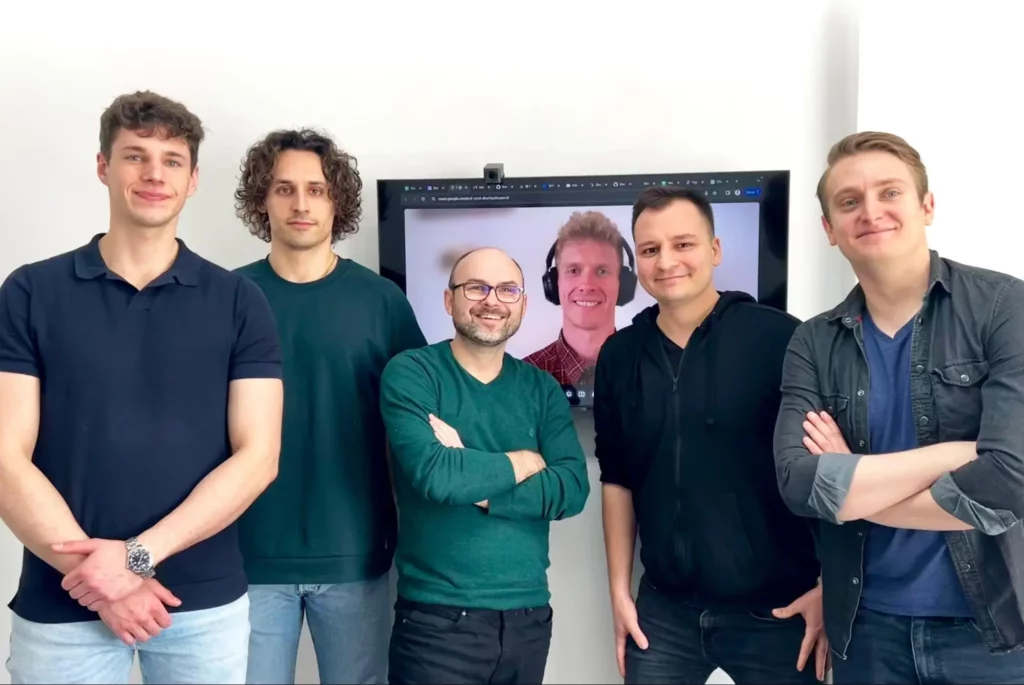
GB: Okay, that sounds pretty complex to say the least! What about your methodology for researching new ideas and running the team?
MK: Yeah, I think it’s hard to match it to a specific methodology actually because it was a bit of a mixture. For the ideas, we actually tried to build a flow similar to scrum methodology but in the end it was more like kanban. I think we brought together a bunch of ideas but we definitely had separation for each phase and at each phase. I think we used our experience from previous projects, where each of us has tried many different methodologies, and in the end we created something that worked the best for validating as many ideas as possible.
Our first step was to prepare a simple outline or sketch of our idea and then we had to present it internally to the R&D Core Team. This was a validation stage without talking to people outside of the company, so keeping things fairly unofficial. After we were pretty sure that the idea was a good one, or at least had some potential, we presented it to the Advisory Group, but there weren’t many projects that went through that phase. But I think that’s a good thing because it meant we didn’t focus too much on bad ideas. I mean, it sounds negative to say bad ideas but in the end, it’s pretty simple. If they didn’t get through the validation process then they need to wait on the shelf so, at least from our perspective, they couldn’t be anything good for us.
GB: Yep, there is a famous quote: “fail fast”. I guess we actually worked that out quite quickly.
MK: Yeah, yeah [laughs].
GB: How about the sustainability of the validation process that we’ve created. Do you feel that it’s 50% done or more complete?
MK: I feel like we don’t have something that’s self-explanatory yet, like a finished product of a process to somebody. I think it’s more like a road map at the moment and the greatest thing we’ve gained from this time is the experience. Plus the knowledge of where not to go! These aren’t things you put on official workflows and that’s something we would need to explain to future R&D teams at the moment but I can say that I think the process is pretty stable for the moment.
We’ll be able to give them pointers, to say do not waste your time on this or that. They’ll be able to just take it from us that this is the right path to follow – but at the same time, they might figure out a better flow for their team or come up with some refinements to the process of their own. This is something we can always discuss and improve as well in the meantime, it’s a very dynamic thing. It’s also closely related to the real world, one that’s changing quickly too. I mean, for now, we know which branches are getting the best profits but next year it might be something different and it’s not really any great mystery that when we created the process we were targeting specific branches and that this also kind of affected how we built the process. It’s not really a general thing but very much based on the current situation and current demand.
GB: Yeah, it sounds like we cannot really prepare one role to rule them all and we’ll definitely have to spend some time on this in the future too.
MK: Yeah.
GB: So you mentioned a prototype earlier and the first phases of a prototype…
MK: Yes.
GB: But I know that something that was something even before the prototype which was called a pretotype? I would love to hear about the difference between the two of them, so if you could just walk us through them it would be great.
MK: So I think the pretotype is a very important stage but also there is no such thing as a strong line of separation between them. I mean, the moment where you have pretotype and then a prototype, at least for our current idea, was pretty fluid. I think almost from the beginning we had some kind of thing to show, something that helped us explain what the idea was. I think as long as it had a very simple form and as long as it was only almost like an image to point your finger at and say “okay that’s gonna be our product”, I think that moment we should have called it a “totype” or something similar. I mean, that wasn’t a pretotype. It didn’t do the job it was meant to, it wasn’t interactive. We could say it was just a mock-up, you could still visit a URL and see it but there was no interaction at all. When we switched phases, though, to when we already knew… After validation, after talking with people about what should be core features, actually then we started to assemble a real product. So for now we have some core features, there is functionality which is obviously still a bit limited and not a huge database, but you can click through, you can see how it’s going to change and I think it’s a really nice way to showcase it and even leave the end user for a moment with it. Just to see how it all works together. It’s not MVP yet so I’d almost leave the end user out for now. We still need to explain what is where and how things work together, but it’s interactive. It’s going in the direction where we want the final product to be so we can already say it’s a prototype.
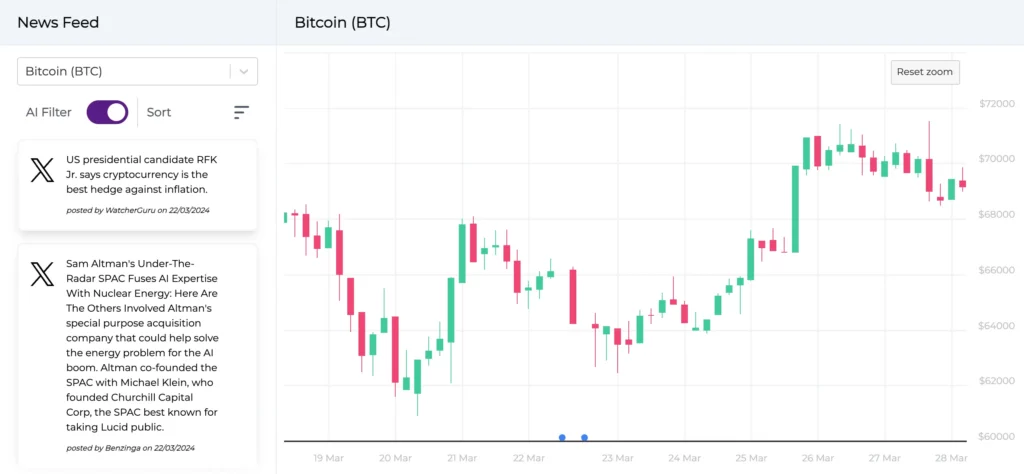
GB: Okay. That’s pretty clear and maybe I’d add one more thing. I’ve heard the story about the guys who were working on the first mobile phones or touchpads. They went out walking with a kind of a brick or a piece of wood for a couple of weeks, just to check if they would actually like to use it and they had to put drawings on the piece of wood. That’s pretty amazing when you think about it. And I think we are going in the right direction by trying to fulfill the fail fast rule and it’s probably what’s helped us to get rid of a couple of ideas at the beginning and move right to prototyping.
MK: Exactly – because we figured out that for some ideas it’s hard to even build a prototype that would be similar to it, which meant the idea was perhaps too sophisticated for the scope of the project. It didn’t fit, basically. Perhaps it was even a good idea, maybe it’s gonna-save-the-world level, because we had some brilliant ones in this direction too. But we still needed to remember we were initially just a team of three developers. We could obviously add a few more but not like a company of 500 people. For that reason we had to shelve a few of our brilliant ideas because we weren’t even able to build a prototype for them, but this was just a bump in the road.
GB: Yep, and talking about this, those small bumps on the road or big waves at sea. I’m curious what were the biggest problems you faced, the biggest waves. Let’s say those that you needed to overcome during the last couple of weeks or months just to be in the place you are right now. What was the hardest challenge?
MK: Coming back to the previous analogy, the simplest answer is that moment where you couldn’t see any light basically, so no lighthouse and no daylight either, there were moments like that. I think we felt a bit like “We have no idea where to go” and this was true when we were in the deep phase of research. It’s exactly like that at some moments, you don’t even know where you are searching. So these are the most difficult moments and the biggest obstacles and I think in such moments the best thing we had was that there was always at least one person in the team that was the most optimistic about us being able to get out of it. Again I think it’s a very nice analogy, because in the real world we often have some crises in groups of people, and there’s usually one person that’s giving extra energy to the others to make them believe that we’re going to survive.Maybe it sounds a bit too dramatic, but it really is like that and there was always one optimistic person who was saying okay, it’s fine. We’re gonna do it, let’s just focus on the process and this is just a difficult moment.
GB: Yeah, that’s pretty optimistic to be honest and it sounds that you have a pretty amazing team with a lot of optimism. It’s not only about rowing or steering your boat though, sometimes it’s about turning the boat upside down and swimming with your head underneath and this is absolutely normal for R&D!
MK: Yeah, true.
GB: So, sticking with the boat. Are there any other boats sailing these same uncharted waters that are coming after us? Or perhaps they are already in front of us, seeking out new lands? In other words, is there anyone that is doing something similar to our current research and development projects?
MK: It’s a tough question because we can either talk about one specific product or talk about what the team is doing currently, but let’s start with the team because I think that’s the most important. I’ve worked for a few IT companies previously and I’ll be honest: I’ve never heard of someone creating or even thinking about creating such a team. So I think it’s a big leverage from our side that we delivered such a team and that we are investing in it and still seeing a bright future. While talking about our product, it’s more sophisticated because tech always has its limitations and for now we have made it according to the best available knowledge, we think that our product’s advantages are gonna really put it in a great place in the market. We are obviously aware that there is competition and that many people are trying to deliver something similar, although maybe not exactly built in the same way. We think it’s going to be the best fit for the market.
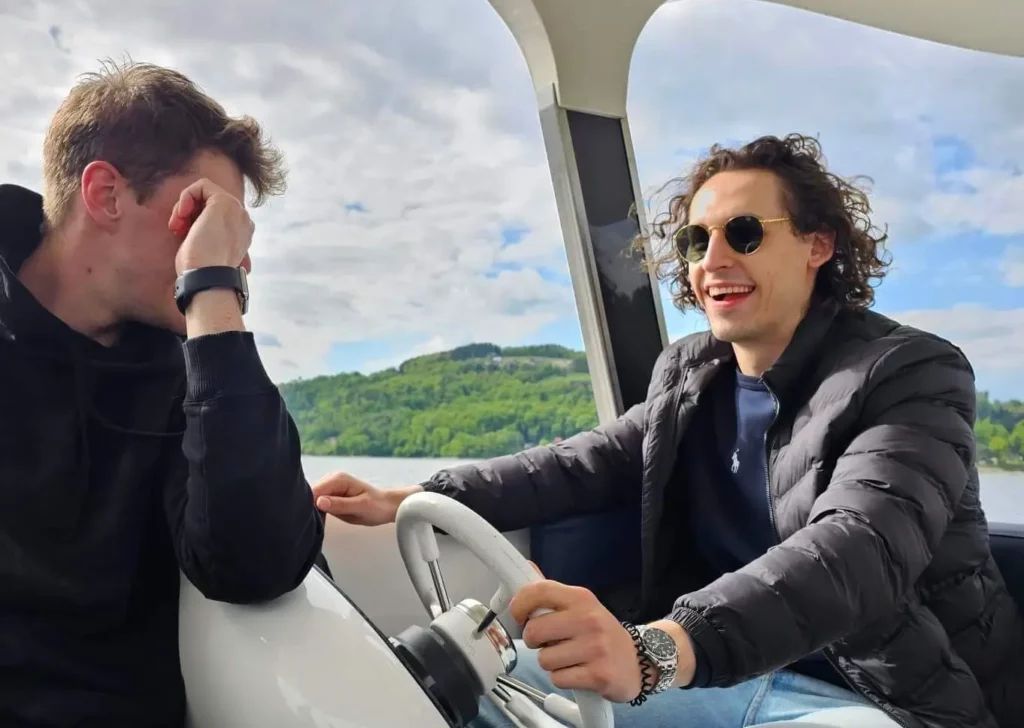
GB: Yeah, that’s a pretty interesting thing about competition because I remember from the first discussions that we had, back at the brainstorming stage, that some people were pretty afraid and that they had seen something even slightly similar to the idea that they had. But then we had this amazing switch in the team to thinking that ok, so this means the idea is good. This became something like a validation and the realization that it might be a really great opportunity for us. But when we started it was like “Yeah,someone has found something kind of similar, so perhaps we should not investigate it” and I think the first approach is much better. How about you?
MK: Yeah, I think we see it exactly like that: obviously there is competition and it’s a good sign. Because it means that we are talking about things that have a presence on the market and we can find a place for us as well if we only listen to that market, to the people in it. I want to help with that product and I still see some great opportunities for us. I mean, there is a competition but it’s pretty innovative. I think we figured out that it’s not like there are already big players on the market. Maybe some big players are trying to add it to their pitches but only releasing it as some beta version or are not really talking loudly yet about it. So it really looks like a space for such things like ours – and us – that can quickly adapt and build something stable.
GB: Yeah, and there is one more aspect as well – the younger generations are trying to make a difference in the world and, being a part of an innovation making industry, we can help make the lives of farmers easier through tech or help a company improve its carbon footprint. It’s not only about succeeding. Sometimes it’s about a journey, making contacts, partners helping other companies to succeed. That’s at least my personal opinion about it.
MK: Yeah.
GB: It’s all about making the world a better place. So the competition…
MK: Yeah.
GB: if it’s going in the right direction, sorry, yeah.
MK: And it’s creating great opportunities if we think about those big players I mentioned. If they are starting to be more aware about things you have thought about then, okay, there might be competition, but they are also gonna create new areas in the market and there will be room for more software companies like that. It’s nice that there’s also pressure coming from people who are conscious that there are some global problems and we cannot ignore them, and there are companies that are trying to deliver because they want to keep their customers.
GB: So I’m pretty sure that part of this project has involved working outside of your comfort zone. How important is this? How important has working outside their comfort zone been for the R&D team?
MK: First of all, we all had to accept that there’s gonna be a lot of working out of our comfort zone. Even though at the beginning we thought there might not be that much, we quickly saw the reality during the research phase. It was something very unfamiliar to us and we needed to get that knowledge as quickly as possible. We needed to ask others maybe how to work through it and support those working outside their comfort zone. This could come from either from other team members, something like okay, we are all in it, or it could come from above. But in the end, I think we all handled it pretty well, there was a good vibe in the team that we were gonna deliver and obtain some valuable knowledge. Even if it’s not the most comfortable to be working out of your comfort zone – I think nobody wants to be in it for a longer period of time – you always appreciate it when you have gone through it. So that’s where we are now.
GB: Perfect. So two final questions for you. The first is about the lessons you’ve learned or perhaps the most important lesson that you’ve learned over the last couple of months.
MK: I mean, yeah, maybe it’s gonna sound simple or silly, but never give up. Basically, even if you think things are not going well, just be patient, make some small adjustments and believe it’s gonna get better. I mean, it might sound like a platitude, but it works.
Whether it’s R&D, climbing or sailing a boat through uncharted waters, it’s about just being confident, keeping up the pace and believing in yourself.
Grzegorz Blachliński
GB: Sounds pretty optimistic as well. I can think of plenty of people that I know that never give up. It might be something that people repeat a lot, but actually it is true whether it’s R&D, climbing or sailing a boat through uncharted waters, it’s about just being confident, keeping up the pace and believing in yourself. Now, that last question: what’s your personal dream direction for the next R&D project? Where would you like us to turn the lighthouse beam on?
MK: Maybe it might seem like a platitude but it is a really important thing for me personally and I always try to choose my work by consciously thinking about the product or company I’m going to work with and if it is doing some good or something harmful. You can easily find work in some software company connected to gambling, for example. Just one example, but that’s the thing I’m talking about, ideally with projects that are doing something to have a positive impact on the environment. That’s my dream scenario. Let’s say so and I think we already had some ideas like that in the R&D team. While they were rejected for other reasons, I really hope we can go back to them – perhaps after getting experience from releasing the first product. It might not seem like a world saver, but it is a great product. So, to answer your question, I’d love to go back to Green Tech or similar areas
GB: Yeah, and I couldn’t agree more, especially with all I’ve said about the changing generations and how everyone would love to make an impact right now. It’s something that I’ve wanted to see ever since I first started working as a software engineer. I never wanted to make money. It was never my main priority. I always wanted to make some difference in the world. Hopefully we will see R&D succeed in this in the next couple of months.
MK: Hopefully!
GB: Fingers crossed that we will be able to meet in the next few months. Let’s talk about the amazing work we have done in making the world a better place.
MK: Yeah. I’m keeping my fingers crossed too. So, there’s already two of us and…
GB: Definitely, so I think we can wrap it up with this nice sentence. Thank you Maciek for a pretty amazing interview. Talk to you soon and hope to see more about R&D in the next couple of weeks. Probably we will see a lot on the blog, LinkedIn etc and you will be there for sure.
MK: Yes, hopefully and thank you also. And, yeah, let’s see what’s in the future.
